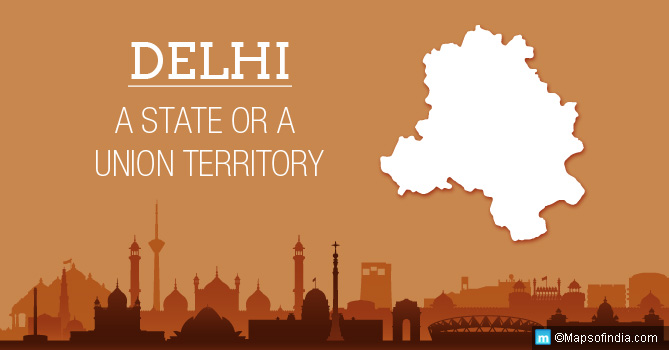
The recent controversy surrounding the status of Delhi has left a layman scratching his head with present AAP government locked in a battle against the Centre. For Delhiites, they are still in a doldrum about the role of the elected Delhi Government, Lieutenant Governor, and Central Government in the administration of the state. Delhi’s status is a peculiar one, as the National Capital Territory of Delhi enjoyed the status of Union Territory with the decision making power vested with the President of India. However, in 1991, with enactment of 69th Amendment Act 1991, Article 239AA was added and it conferred special provision for renaming Union Territory of Delhi to NCT of Delhi by vesting the administrative powers in the hands of the Lieutenant Governor. Since then, there has been confusion regarding the role and powers in the hands of democratically elected government of Delhi.
Delhi and its History
Delhi has been an important city since the ancient time of Mahabharata to being the capital of independent India. Delhi has been the confluence of cultural, economics and politics, with people from different areas travelling to the city. Over the years Delhi has been the capital of several kingdoms and empires, every rule left its impression on the city that people have to know about. Starting from the ancient city of Indraprastha to the National Capital Territory of Delhi, the city has undergone tremendous transition and even after that the city lives and breathes every essence of the impression left on it over the thousands of year.
Delhi at the time of Independence and thereafter
In 1911, the British crown shifted its administrative capital from Calcutta to Delhi, in 1927, it was renamed as New Delhi before being officially inaugurated in 1931 as the new capital of British India. Due to geopolitical significance it was made the capital of independent India in 1947, at that point in time the city was known as Chief Commissioner’s Province of Delhi. In 1956, the state Reorganisation Act, 1956, was passed and Delhi was made into Union Territory of Delhi. It enjoyed the the status of Union Territory of Delhi under the Article 239 of the Constitution of India with the administrative power vested in the hands of the President of India. The final calls regarding the passage of a law or amendment were with the President based on the advice of Delhi’s legislative assembly and its Council of Ministers had the right to enact and pass laws pertaining to majority of entries mentioned in the State and Concurrent List, while the President did not need require the advice of the Council of Ministers.
Article 239AA and the 69th Constitutional Amendment
In 1991, a long discussion and deliberation took place in the parliament on the role of the Delhi’s legislative assembly, the Council of Ministers, the President or Lieutenant Governor. The parliament passed the 69th Constitutional Amendment and added another provision to Article 239. With the introduction of Article 239AA, the Union Territory of Delhi was given special provisions among all the UTs, with the power shifting from President to Lieutenant Governor. The name of UT of Delhi was changed to National Capital Territory of Delhi. According to the Article 239AA, the Legislative Assembly has the power to make or amend laws for the whole or any part of the National Capital Territory, with matters enumerated in the State List and the Concurrent List for matters applicable to Union territories. There were exceptions with functioning of Delhi Assmebly, as the Council of Ministers cannot work on matters pertaining to Entries 1, 2 and 18 mentioned in the State List and on Entries 64, 65 and 66 of the Concurrent List that are relatable to the Entries 1, 2, and 18 of the State List.




